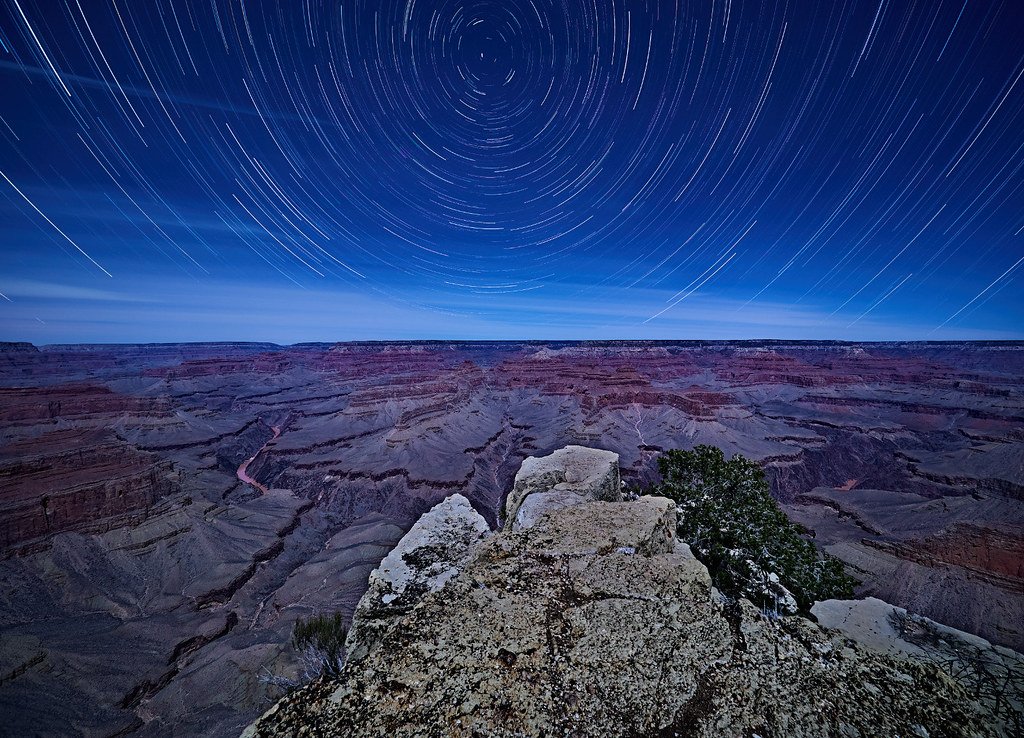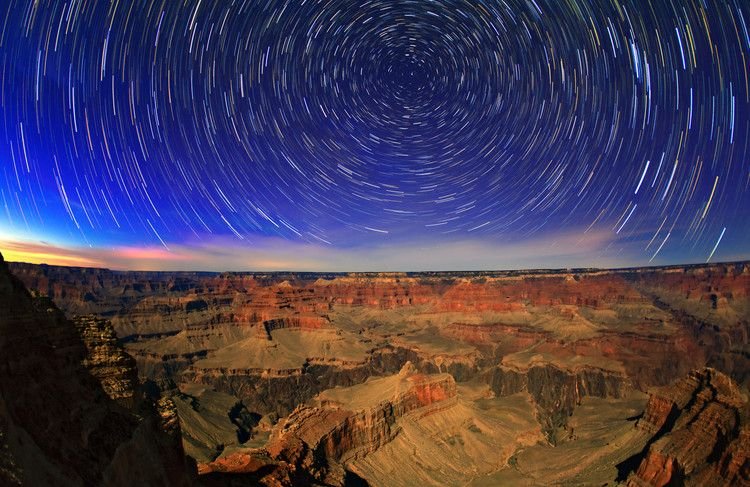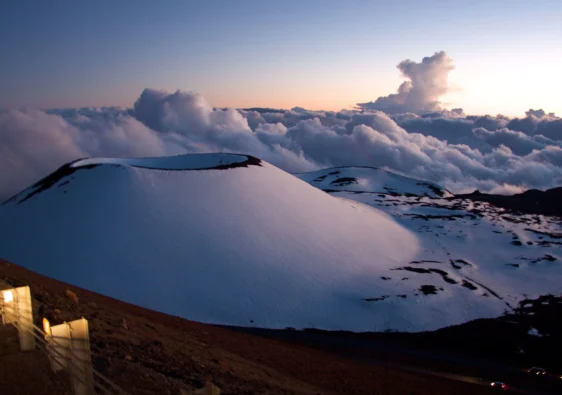
Introduction to the Grand Canyon-Parashant National Monument
The Grand Canyon-Parashant National Monument is a spectacular and lesser-known gem nestled on the border between Arizona and Utah. Established in 2000, this stunning area encompasses roughly 1,200 square miles of diverse landscapes, making it a prime destination for outdoor enthusiasts and nature lovers seeking solitude away from the bustling urban life. Stretching from the majestic cliffs of the Grand Canyon to the expansive desert plateaus, the monument offers visitors a unique opportunity to explore some of the most breathtaking scenery in the Grand Canyon system.
One of the distinguishing features of the Grand Canyon-Parashant National Monument is its diverse geography, which includes volcanic landscapes, expansive grasslands, and striking canyons. This diversity contributes to the rich array of flora and fauna, providing habitats for numerous species, some of which are endemic to the region. The landscape is punctuated by vivid red rock formations, rugged mountains, and tranquil valleys, all of which invite exploration and discovery.
Moreover, the Grand Canyon-Parashant National Monument is celebrated for its exceptional stargazing conditions. As an area relatively free from the light pollution often found in urban environments, it presents an ideal setting for astronomers and casual stargazers alike. The clear, dark skies above the monument offer unobstructed views of celestial wonders, making it a favored location for those wanting to immerse themselves in the night sky’s wonders.
In a society that often feels hurried and chaotic, the Grand Canyon-Parashant National Monument stands as a sanctuary of tranquility, offering visitors a rare chance to reconnect with nature and experience the serenity of the great outdoors. Its unique location and diverse landscape truly encapsulate the beauty of the American Southwest, positioning it as one of Arizona’s best-kept secrets.
Why Grand Canyon-Parashant is a Stargazer’s Paradise
Grand Canyon-Parashant National Monument is renowned for its breathtaking landscapes, but it is equally celebrated for its extraordinary stargazing opportunities. One of the defining features that set this remote destination apart is its pristine dark skies. The monument enjoys minimal light pollution, which allows for an unobstructed view of the cosmos. This is crucial for both amateur astronomers and seasoned stargazers who seek to observe celestial wonders without the interference often found in urban environments.
Visitors to Grand Canyon-Parashant are greeted with optimal viewing conditions, particularly during the clear desert nights. The expansive wilderness of the monument creates a natural observatory, where the absence of artificial lights enhances the visibility of stars and planets. Stargazers can marvel at the clarity and brilliance of the Milky Way, which stretches across the night sky like a luminous river of stars. The high elevation and dry atmosphere further contribute to the exceptional visibility, making it an ideal location for astronomical observations.
Moreover, the monument frequently hosts various celestial events, including meteor showers and planetary alignments. These occurrences attract avid stargazers and curious onlookers alike, providing an excellent opportunity for education and experience in the field of astronomy. The elevation and open space of Grand Canyon-Parashant not only facilitate breathtaking views but also foster a connection to the universe that can be both humbling and inspiring.
For those looking to immerse themselves in the night sky, a visit to Grand Canyon-Parashant National Monument promises a magical experience. Whether you are setting up a telescope or simply enjoying the mesmerizing display above, this hidden gem offers a myriad of opportunities to explore the beauty of the universe. Time spent under the stars here is sure to ignite a passion for stargazing and a deeper appreciation for the wonders of the night sky.



Exploring the Rugged Wilderness: Activities and Trails
The Grand Canyon-Parashant National Monument offers a remarkable outdoor experience for visitors seeking adventure in its rugged wilderness. This vast expanse, covering over 1,000 square miles, is home to a plethora of recreational activities, including hiking, camping, and wildlife watching, all of which invite exploration of its unique landscape.
Top tours in the Grand Canyon
Hiking is among the most popular activities in the monument, with numerous trails catering to various skill levels and interests. Noteworthy trails include the historic Grand Gulch Mine Trail and the challenging Toroweap Overlook Trail. The Grand Gulch Mine Trail is relatively moderate, appealing to families and casual hikers, as it leads to the remnants of an early mining operation, punctuated by stunning views of the surrounding terrain. Conversely, the Toroweap Overlook Trail is more strenuous and rewards those who tackle its challenges with breathtaking vistas of the Grand Canyon, offering a unique perspective often missed by those who stick to more accessible viewpoints.
Camping enthusiasts will find ample opportunities within the monument, with designated sites that provide a rustic experience, often surrounded by quiet solitude and the sounds of nature. Furthermore, camping at the Grand Canyon-Parashant National Monument allows visitors to immerse themselves in an environment teeming with wildlife; sightings of bighorn sheep, mule deer, and various bird species are common. With nightfall, the clear skies above the monument transform into a dazzling canvas of stars, perfect for stargazing and appreciating the cosmos away from city lights.
For those eager to embark on a journey into the heart of Arizona’s wilderness, exploring the Grand Canyon-Parashant National Monument presents an array of activities and trails designed to offer unforgettable experiences. Engaging with the landscape during the day and witnessing the night sky at its finest truly encapsulates the essence of this hidden gem.
What to Bring for Your Stargazing Adventure
When planning a visit to the Grand Canyon-Parashant National Monument for stargazing, it is essential to prepare adequately to ensure an enjoyable experience. The night sky in this area is renowned for its clarity, making it a prime location for amateur and professional stargazers alike. Here are some essential items to consider bringing along on your adventure.
Firstly, quality camping gear is imperative. A sturdy tent, sleeping bags rated for low temperatures, and comfortable sleeping pads will provide shelter and insulation against the cooler desert nights. Since the temperatures can fluctuate significantly after sunset, layered clothing is crucial for comfort. Clothes made from moisture-wicking materials can help manage sweating from daytime activities, while heavier, insulated garments will keep you warm as temperatures drop.
For photography enthusiasts, bringing appropriate equipment to capture the night sky is a must. A DSLR or mirrorless camera with a wide-angle lens will allow you to photograph the stars in their full glory. A tripod is also essential for stabilizing long exposure shots. Additionally, consider items like extra memory cards and batteries, as cold weather can deplete battery life rapidly.
In terms of comfort and safety, pack a sturdy flashlight, preferably with red light settings to preserve night vision while navigating the terrain. Snacks, plenty of water, and a first aid kit are also advisable, ensuring that all your basic needs are met during your stargazing experience. Remember to carry a star chart or utilize a stargazing app to help identify celestial bodies. By preparing thoughtfully with these essential items, you will enhance your journey under the breathtaking skies of Grand Canyon-Parashant National Monument.
Best Times to Visit for Optimal Stargazing
Stargazing at the Grand Canyon-Parashant National Monument offers a breathtaking experience, with its remote location ensuring minimal light pollution. To fully appreciate the celestial wonders above, understanding the best times for a visit is essential. Generally, the ideal months for stargazing are from late spring to early fall, specifically from April to October. During this period, the nights are typically warmer, and the sky is clearer, providing an excellent backdrop for observing celestial phenomena.
In addition to seasonal considerations, the lunar phase plays a significant role in optimizing stargazing experiences. The new moon phase is the best time to visit, as there is minimal moonlight interference, allowing fainter stars and deep-sky objects to become more visible. To make the most of your experience, plan your visit around the new moon; ideally, a few days before and after also offer suitable conditions for stargazing. This timing ensures that the sky remains dark enough for optimal viewing.
Weather considerations should not be overlooked. The Grand Canyon-Parashant National Monument can have variable weather conditions, even in the same season. As such, it is advisable to check forecasts ahead of your trip. Clear skies are crucial for a successful stargazing experience, as clouds and precipitation can hinder visibility. Typically, the summer months may bring thunderstorms, particularly in July and August, so visiting early in the season provides greater assurance of clear skies. Similarly, late fall can also deliver crisp nights with stable atmospheric conditions, allowing for remarkable views of the night sky.
Overall, careful planning encompassing lunar phases, seasonal changes, and weather forecasts will enhance your stargazing adventure at the Grand Canyon-Parashant National Monument, allowing you to fully immerse yourself in the beauty of the cosmos.
How to Reach the Monument: Travel Tips and Directions
Reaching the Grand Canyon-Parashant National Monument requires some planning, given its remote location in northwestern Arizona. Visitors can access the monument primarily by car; however, it is advisable to come prepared with supplies and a reliable map, as services in the vicinity are limited.
The nearest major city to the monument is Las Vegas, Nevada, approximately 150 miles to the west. From Las Vegas, travelers can take Interstate 15 North, followed by U.S. Route 93 East. This well-maintained route offers scenic views of the Mojave Desert, making the journey more enjoyable for those interested in nature’s beauty. After approximately 90 miles, motorists should take State Route 389, leading directly to the monument’s entrance.
For those starting from the Grand Canyon’s South Rim, the distance is roughly 200 miles. Travelers can take Arizona State Route 64 until connecting with U.S. Route 89 and then proceed to State Route 389. The drive features stunning views of the Colorado Plateau, providing an exciting prelude to the diverse landscapes awaiting at the monument.
Public transportation options to the Grand Canyon-Parashant National Monument are limited. The nearest bus stations are located in St. George, Utah, or Flagstaff, Arizona. If utilizing public transit, arranging for a rental vehicle is recommended to reach the monument, as it offers greater flexibility in exploring the area.
Parking is available within the monument, offering various access points to hiking trails and viewpoints. However, it is crucial to note that paved roads are minimal, and visitors are advised to have a high-clearance vehicle for navigating more rugged terrain. Following these guidelines can enhance your experience while exploring this lesser-known treasure of Arizona.
Safety Tips for Dark Sky Camping and Stargazing
Embarking on an adventure to the Grand Canyon-Parashant National Monument for dark sky camping and stargazing requires thorough preparation and adherence to safety protocols. With its remote wilderness, visitors should prioritize safety to fully enjoy the breathtaking celestial views without incident. Below are essential tips to enhance your camping experience safely. Try Glamping or check out accommodations nearby:
When camping in the Grand Canyon-Parashant, it is crucial to remain aware of the local wildlife. The secluded nature of the monument is home to various animals, including snakes and larger mammals like bears and cougars. It’s advisable to store all food and scented items securely in bear-proof containers or hang them out of reach, preferably at least 10 feet high. Additionally, maintaining a clean campsite is essential to avoid attracting wildlife. Keep common spaces tidy and dispose of waste properly.
Navigating the outdoor environment at night can present its own challenges. Travelers should invest in a reliable flashlight or headlamp equipped with red light options to minimize light pollution while protecting your night vision. Familiarize yourself with the area before darkness falls; a detailed map or GPS device can assist with navigation. It’s vital to travel with a partner or ensure someone knows your route and estimated return time, enhancing safety in case of an emergency.
Lastly, awareness of the rural environment can significantly impact your experience. Prepare for temperature fluctuations common in desert areas, where nights may be significantly cooler than days. Dress in layers and bring appropriate sleeping gear. It is also wise to carry sufficient water and a first aid kit, considering the distance from civilization. By following these safety tips, your visit to the Grand Canyon-Parashant National Monument can be both enjoyable and secure.
Meet the Wildlife: Flora and Fauna of the Monument
The Grand Canyon-Parashant National Monument is not only known for its stunning vistas but also boasts a remarkably diverse ecosystem. Spanning over a million acres, the monument is home to a wide variety of flora and fauna that contribute to its unique environment. The interplay of elevation changes, soil types, and climatic conditions creates a range of habitats, allowing for an extraordinary collection of species to thrive.
In terms of plant life, visitors can expect to encounter several notable species. Among them are the hardy Joshua trees, which dot the landscape with their striking appearance, and a variety of cacti, including the distinctive barrel and prickly pear. The monument’s elevation also supports areas of piñon-juniper woodlands, where piñon pines and juniper trees provide critical habitat for numerous bird species. The native wildflowers that bloom during the spring months add a colorful dimension to the landscape, inviting pollinators such as bees and butterflies.
The wildlife within the Grand Canyon-Parashant National Monument is equally impressive. The area is inhabited by a diverse range of mammals, including mule deer, desert bighorn sheep, and even elusive mountain lions. Birdwatchers will be pleased to spot species such as the peregrine falcon and the California condor, both of whom utilize the canyon’s unique terrain for nesting and hunting. Reptiles, such as the Gila monster and various species of snakes, also contribute to the richness of the monument’s biodiversity.
Conservation efforts play a critical role in preserving this fragile ecosystem. The National Park Service, along with various organizations, actively works to maintain the monument’s natural beauty while protecting the wildlife that call it home. Educational programs and guided tours help visitors appreciate the importance of conservation, fostering a deeper connection to the remarkable flora and fauna of this hidden gem in Arizona.
Conclusion: A Call to Experience Arizona’s Hidden Stargazing Oasis
Grand Canyon-Parashant National Monument stands as one of Arizona’s most remarkable yet less-explored destinations, offering an unparalleled experience for those who seek both adventure and tranquility. This sprawling wilderness, rich in natural beauty, is not merely a sanctuary for wildlife and diverse ecosystems, but also a stargazer’s paradise. The monument’s remote location minimizes light pollution, making it an ideal site for unraveling the mysteries of the night sky. Whether you are an avid astronomer or a casual observer, the night views here are a captivating feast for the eyes.
The vast landscapes—from dramatic canyon views and rugged terrains to peaceful valleys—provide ample opportunities for exploration, hiking, and photography. Each trail invites you to immerse yourself in the stunning scenery, allowing for moments of reflection and appreciation of the natural world. As the sun sets over these ancient formations, one can witness the breathtaking transition of colors in the sky, a prelude to the celestial spectacle that awaits after dark.
Visiting Grand Canyon-Parashant National Monument not only fosters a deep connection with nature but also encourages a sense of peace and solitude that can be hard to find in our fast-paced lives. The quiet surroundings and the expansive night sky create a perfect atmosphere for those looking to escape the noise of the outside world and indulge in introspection or relaxation.
In conclusion, Grand Canyon-Parashant National Monument is an invitation to adventure and discovery. It beckons all those who yearn for an escape into the serene beauty of Arizona’s wilderness. As you plan your journey, consider this hidden oasis not just a destination but a chance to experience the magic of the universe above and the beauty of the land below. Embrace the call to adventure and uncover the secrets that await in this enchanting haven.



